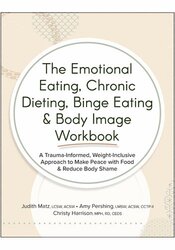Enrol in an online course today for flexible, self-paced learning—no fixed schedule required. Plus, enjoy lifetime access to course materials for convenient revisiting.
Directionality: A Rosetta Stone for Psychotherapy
I’d like to think that the dark days of schoolism are gone: when we’d argue over whether psychodynamic therapy was more effective than person-centred, or existential over CBT. Today, I hope, most of us recognise that different clients need different things at different points in time, and that there’s no one ‘right’ or ‘best’ way of doing therapy. It’s something that John McLeod and I articulated in our ‘pluralistic’ approach to therapy, but lots of other writers and therapists have said, or thought, the same thing. And with the psychotherapy research now showing, again and again, that different therapies are about equivalent in outcomes, it’s increasingly difficult for anyone to seriously claim that their therapeutic orientation is the best.
So lots of things work. But the problem is, if you want to practice in an integrative, eclectic, or pluralistic way, how do you do it without everything becoming a mish-mash of ideas and practices – confusing ourselves, let alone our clients? Problem is, it’s argued, these different practices are based on fundamentally different views of the human being. So if you’re empathically attuning to your client as an actualising organism, how can you suddenly start psychoeducating them about social skills? Where’s the coherence? And if there’s no coherence, then there’s no real depth – and no critically reflective practitioner behind it all knitting together the different ideas and practices. It’s just shove ’em in a bag, shake ’em up, and hope for the best.
What I think would really help, then, is concepts and practices that can bridge these different worldviews, so that seemingly very discordant ideas and methods can be articulated together in coherent ways. And that’s what I’ve tried to do with the concept of directionality in my new book, Integrating counselling and psychotherapy: Directionality, synergy, and social change (Sage, 2019). Directionality is the agentic, future-oriented, forward-moving quality of human being: our always-on-the-way-to-somewhereness. It can refer to both conscious directions, such as explicitly set goals, but also to more unconscious, bodily-felt wants and desires. The concept comes, as I do, from the existential field; but I think it has the capacity to act as something of a Rosetta Stone for the counselling and psychotherapy field, because it’s something that all the different approaches talk about it in different ways. So we have the ‘actualising tendency’ in the humanistic approach, or psychodynamic ‘desires’, or Acceptance and Commitment Therapy’s ‘values’ – all different ways of describing how clients reach out forward in their lives.
And actually, when you use the concept of directionality, what you see is that different therapeutic approaches are actually saying some very similar things. In particular, they’re all saying that psychological distress is when people can’t ‘actualise’ their most fundamental, ‘highest order’ directions: like for relatedness, or pleasure, or growth. What they also all say is that this tends to happen for one of two reasons: either it’s because people’s directions are pulling away from each other, or because the ways people are trying to actualise their directions just aren’t very effective. What that makes us, then, as counsellors and psychotherapists, is people who help people re-configure how they live their lives in more synergetic and effective ways, so that they’re more able to get more of what they want (what they really, really want) more of the time.
With the appropriate training, then, it’s possible to coherently draw together many different theories and practices – for instance, empathy, countertransference, psychoeducation – because they can all be different ways of helping clients get from where they are to where they want to be. Empathy could help a client reflect on – and acknowledge – their deep desire for closeness. Disclosure of countertransferential feelings could help them see how they make that difficult for themselves. And psychoeducation could help them develop skills to establish more satisfying relationships. Train, bus, plane… when we think of psychotherapy as a journey that clients are on, there’re lots of different combinations that can help them get to where they want to be. And what unites them is that they’re all about helping clients go somewhere. Focus on the mode of transport and things can seem very incompatible: you can’t put a tram on a train track. But focus on the direction of travel – on the client as a directional being – and different ideas and practices integrate together in a much more coherent way.
It’s all about going forward, exploring, emerging – actualising that deepest essence within us that is always on the move.
Integrating Counselling and Psychotherapy: Directionality, synergy, and social change, by Mick Cooper, is published by Sage on March 10.


















